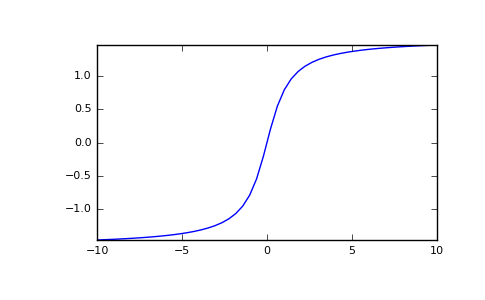-
numpy.arctan(x[, out]) = -
Trigonometric inverse tangent, element-wise.
The inverse of tan, so that if
y = tan(x)thenx = arctan(y).Parameters: x : array_like
Input values.
arctanis applied to each element ofx.Returns: out : ndarray
Out has the same shape as
x. Its real part is in[-pi/2, pi/2](arctan(+/-inf)returns+/-pi/2). It is a scalar ifxis a scalar.See also
Notes
arctanis a multi-valued function: for eachxthere are infinitely many numberszsuch that tan(z) =x. The convention is to return the anglezwhose real part lies in [-pi/2, pi/2].For real-valued input data types,
arctanalways returns real output. For each value that cannot be expressed as a real number or infinity, it yieldsnanand sets theinvalidfloating point error flag.For complex-valued input,
arctanis a complex analytic function that has [1j, infj] and [-1j, -infj] as branch cuts, and is continuous from the left on the former and from the right on the latter.The inverse tangent is also known as
atanor tan^{-1}.References
Abramowitz, M. and Stegun, I. A., Handbook of Mathematical Functions, 10th printing, New York: Dover, 1964, pp. 79. http://www.math.sfu.ca/~cbm/aands/
Examples
We expect the arctan of 0 to be 0, and of 1 to be pi/4:
>>> np.arctan([0, 1]) array([ 0. , 0.78539816])
>>> np.pi/4 0.78539816339744828
Plot arctan:
>>> import matplotlib.pyplot as plt >>> x = np.linspace(-10, 10) >>> plt.plot(x, np.arctan(x)) >>> plt.axis('tight') >>> plt.show()(Source code, png, pdf)

numpy.arctan()
2025-01-10 15:47:30
Please login to continue.